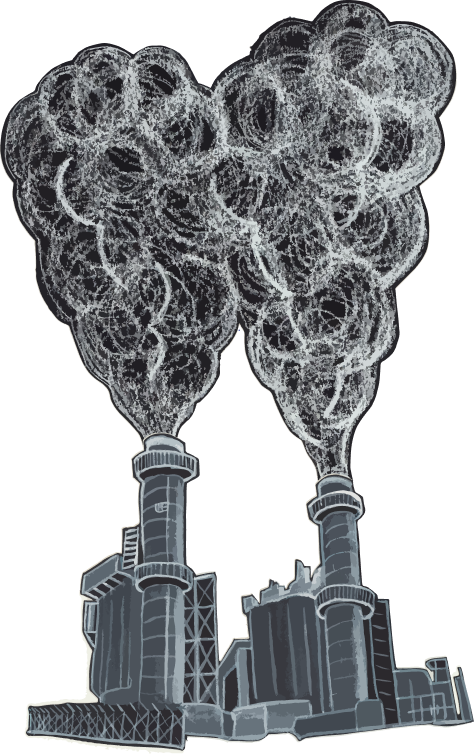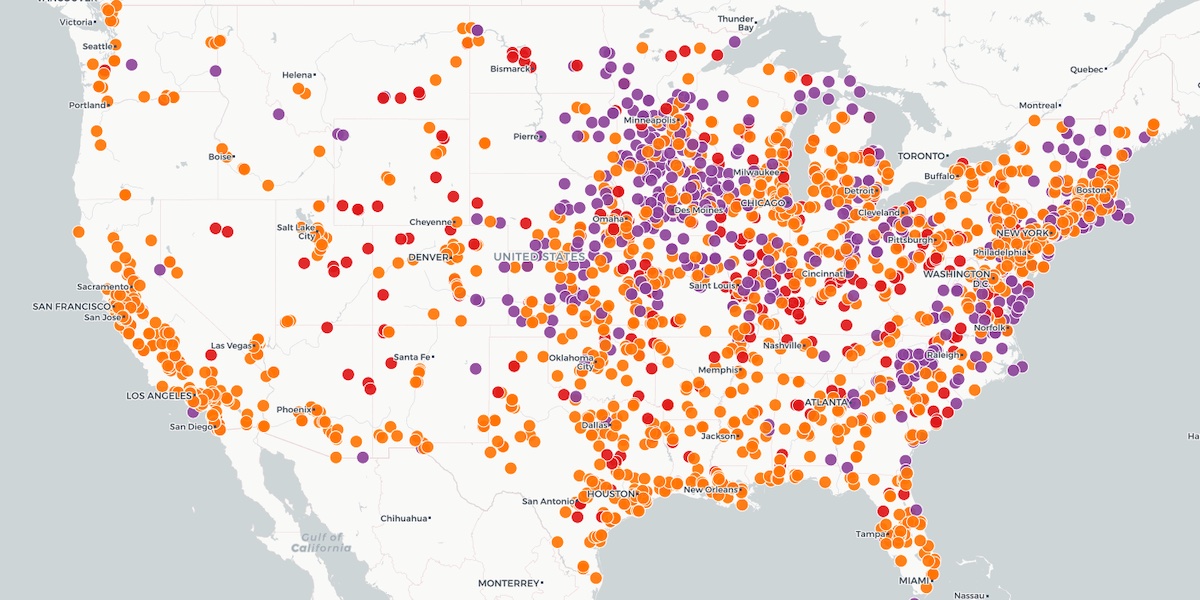Michigan
Back to mapTo get to zero by 2050, Michigan must cut emissions by 3.7% a year
Emissions in Michigan
Million metric tons of carbon dioxide (CO2) [?] equivalent (MTCO2e [?]) emissions
Note: Grey area indicates missing data due to processing delays.
Source: WRI, Mar 2021
This is how we're going to do it
- Boilers and furnaces with heat pumps [?]
- Gas stoves with electric induction stoves [?]
- No-till farming to keep CO2 in the soil
- Capturing methane leaks from landfills
- Capturing CO2 to make emissions-free concrete
- Burning green hydrogen to make emissions-free steel
- Plugging methane leaks from gas pipelines
Decarbonize Our Buildings
17% of Michigan's climate pollution comes from buildings.
We burn fossil fuels to heat our air, water, and food.
To cut this pollution...
Let's electrify our heat!
We'll replace...
...in all of Michigan's 5.0 million buildings.
In fact, 17% of appliances in buildings in Michigan are already fossil fuel free!
That means we only need to electrify the remaining 4.1 million dirty buildings in Michigan. That's around 153,000 per year.
Source: Microsoft, Mar 2021; NREL, Dec 2021Electrifying all buildings cuts 17% of the pollution.
Decarbonize Our Transport
27% of Michigan's pollution comes from cars, trucks, trains, and planes.
But mostly from cars.
To cut this pollution,
your next car must be electric.
Or consider going car-free with public transit, bikes/e-bikes, car share, or other alternatives!
There are 2.7 million vehicles in Michigan and 11,000 are already electric (0.4% of the total).
We need to electrify (or replace) the remaining 2.7 million gas-powered vehicles. That's around 99,000 a year.
Source: DOT, Feb 2021Electrifying all transportation cuts 27% of the pollution.
Decarbonize Our Power
30% of Michigan's pollution comes from burning coal, gas, and oil to make power.

To cut this pollution...
Put solar panels on your roof!
Then, we'll replace all fossil fuel power plants with solar and wind farms.

...and find good jobs for those workers.
Current Fossil Fuel Power Plants in Michigan
14 coal plants
Monroe
Monroe County
3,293 MW
Dan E Karn
Bay County
1,946 MW
St. Clair
St Clair County
1,929 MW
Belle River
St Clair County
1,664 MW
J H Campbell
Ottawa County
1,579 MW
River Rouge
Wayne County
944 MW
Trenton Channel
Wayne County
776 MW
Presque Isle
Marquette County
625 MW
Eckert Station
Ingham County
375 MW
TES Filer City Station
Manistee County
323 MW
Erickson
Eaton County
155 MW
J B Sims
Ottawa County
80 MW
Neenah Paper Munising Mill
Alger County
6 MW
MSC Sebewaing
Huron County
3 MW
57 gas plants
Midland Cogeneration Venture
Midland County
1,854 MW
New Covert Generating Project
Van Buren County
1,176 MW
Greenwood
St Clair County
1,071 MW
Zeeland Generating Station
Ottawa County
968 MW
24 oil plants
Greater Detroit Resource Recovery
Wayne County
68 MW
Superior
Washtenaw County
64 MW
Alpena Cement Plant
Alpena County
47 MW
Tower
Cheboygan County
25 MW
But wait!
It's not enough to replace our power plants with wind and solar farms.
To power our electric cars and buildings, we need two times the electricity we have today.
In all, we'll need to build 12,000 megawatt (MW) [?] of wind power and 11,000 MW of solar power.
Since the average wind turbine provides 2.75 MW of peak capacity, Michigan would need to install about 4,000 turbines.
Since Michigan already has 891 MW of wind and 75 MW of solar, that's 11,000 MW of wind power we need to build and 11,000 MW of solar power. That's around 397 MW of wind power and 396 MW of solar power a year.
Source: EIA, Apr 2022Decarbonizing all dirty power cuts 30% of the pollution.
And gives us zero-emissions power we need to eliminate pollution from buildings and cars!
Other Emissions
The last 25% of Michigan's climate pollution comes from other sources...
This includes farming, landfills, industry, and leaks from gas pipelines.
There's no one solution to solve these problems, but there are lots of great ideas:
That doesn't mean there's no solution, it just means that clean electrification [?] doesn't help with these problems, and you could fill a whole book with covering all of them. We need to encourage our politicians to invest in researching new solutions and implementing existing solutions to these problems!
Ready to do your part?
Learn how to electrify your own machines and pass local policy to electrify the rest
Take Action